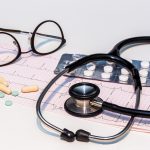Acesion Pharma’s Breakthrough in Atrial Fibrillation Treatment Published in Nature Medicine

In a groundbreaking development in the field of cardiac arrhythmia, Acesion Pharma, a biotech company specializing in novel therapies for atrial fibrillation (AF), has successfully published the full results of its Phase 2 proof-of-concept trial of AP30663 in Nature Medicine. This achievement marks a significant milestone in the quest for innovative treatments for the most common type of cardiac arrhythmia.
The Phase 2 trial focused on AP30663, a first-in-class SK ion channel inhibitor designed to convert AF to normal sinus rhythm. Patients with a current episode of AF lasting for seven days or less were randomized to receive an intravenous infusion of 3 or 5 mg/kg of AP30663 or a placebo. The trial’s primary endpoint, cardioversion from AF to sinus rhythm within 90 minutes from the start of the intravenous infusion, was successfully met. The results revealed that 42% of patients treated with 3 mg/kg AP30663 and 55% of patients treated with 5 mg kg/1 AP30663 achieved cardioversion, compared to 0% in the placebo group. The trial demonstrated a more than 99.9% probability of superiority over placebo for both doses, exceeding the prespecified 95% threshold. Importantly, no ventricular arrhythmias were observed, and adverse event rates were comparable between the active and placebo groups.
The publication in Nature Medicine highlights the scientific community’s recognition of the significance of Acesion Pharma’s achievement in providing the first-ever proof mechanism for SK channel inhibition as a novel treatment for AF. The results can be accessed here.
Advancing into Phase 1: AP31969 Oral SK Inhibitor
In addition to the Phase 2 trial results, Acesion Pharma has initiated a Phase 1 clinical trial for AP31969, an oral first-in-class SK ion channel inhibitor. This trial aims to explore the safety and pharmacokinetics of AP31969 in healthy volunteer subjects, with results expected in Q3 2024. AP31969 is designed for chronic oral maintenance treatment to prevent AF recurrence and has shown strong pre-clinical efficacy combined with a promising safety profile.
Anders Gaarsdal Holst, MD, PhD, Chief Executive Officer of Acesion, expressed satisfaction with the recognition from Nature Medicine and emphasized the company’s commitment to addressing the significant unmet need within atrial fibrillation. He highlighted that the successful Phase 2 trial of AP30663 has enabled the company to advance its oral SK inhibitor, AP31969, into clinical development, emphasizing the importance of understanding the safety and pharmacokinetics of the compound.
The Burden of Atrial Fibrillation and Acesion Pharma’s Mission
Atrial fibrillation is the most common type of cardiac arrhythmia, forecast to affect 25 million people in the US and EU by 2030. Existing drug therapies for AF come with the risk of serious cardiac or other adverse effects, creating a demand for safer alternatives. Acesion Pharma aims to fill this gap with AP31969, offering a potentially safer alternative to existing treatments.
The company, backed by Novo Holdings, Canaan, Alpha Wave Ventures, Global BioAccess Fund, Wellcome Trust, Broadview Ventures, and FC Capital, builds on 20 years of expertise in developing small-molecule SK inhibitors. Acesion is the world leader in the field of SK channel inhibition, with the unique ability to identify and progress SK channel inhibitors into clinical trials. The success of AP30663 in Phase 2 has de-risked Acesion’s broader SK inhibitor pipeline.
About Acesion Pharma and Atrial Fibrillation
Acesion Pharma’s oral program, led by AP31969, is designed to optimize efficacy and safety, addressing the limitations of existing treatments for atrial fibrillation. A landmark clinical trial published in the New England Journal of Medicine demonstrated that sinus rhythm maintenance treatment improves survival and long-term outcomes for AF patients, emphasizing the critical need for innovative therapies in this space.
With Acesion Pharma at the forefront of SK channel inhibition research, the future holds promising possibilities for patients suffering from atrial fibrillation. The ongoing commitment to advancing clinical development and addressing the unmet needs within the field positions Acesion as a key player in the pursuit of safer and more effective treatments for cardiac arrhythmias.





